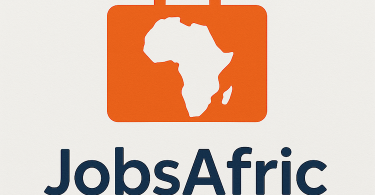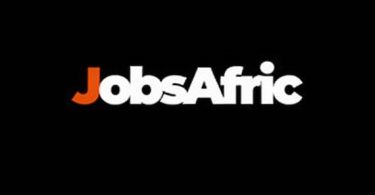In today’s competitive job market, your resume and cover letter are much more than simple documents. They represent your personal brand, telling the story of your skills, experience, and what you bring to the table. Just like creating any impressive piece of work, job seekers need to approach their application materials with both strategy and creativity to make a real impact with hiring managers. This guide walks you through proven methods for building a resume and cover letter that truly get noticed.
Getting Started: Why These Documents Matter
Your resume and cover letter work as your introduction to potential employers. They go beyond being just a job history or polite introduction; they’re powerful tools that highlight what makes you special. A resume gives a quick overview of your career path, while a cover letter tells your story in more detail, showing how your background matches what the company needs. When done right, they work together to send the message: “I’m exactly who you’re looking for.”
Creating an Impressive Resume
Keep Things Simple and Clear
Think of your resume like a clean, well organized space where everything has its place. Use a professional layout with clear section headers, consistent formatting throughout, and readable fonts like Arial or Calibri. Stick to one page if you’re early in your career, or two pages if you have extensive experience. Since hiring managers typically spend just six seconds looking at each resume, every word needs to matter.
Show What You’ve Accomplished, Not Just What You Did
Instead of simply listing your job duties, focus on specific results you achieved. Rather than writing “Managed a team,” try “Supervised a team of 10 people and helped increase sales by 25% over six months.” Use strong action words like “led,” “improved,” or “achieved” to show your impact. Include numbers and percentages whenever you can because concrete results really grab attention.
Make It Fit Each Job
A generic resume is like wearing clothes that don’t fit properly. It never looks quite right. Customize your resume for every position by using important words and phrases from the job posting. If they’re looking for someone with “project management” or “data analysis” experience, make sure those skills are prominently featured. This shows you’re a good match and helps your resume get through the automated systems many companies use to review applications.
Organize for Maximum Impact
Set up your resume with clear sections: your contact details, a professional summary, key skills, work history, education, and any additional relevant sections like certifications or volunteer experience. Include a short professional summary at the top with two or three sentences about your expertise and what you’re looking for. For example: “Experienced marketing professional with 5 years of success increasing brand awareness by over 20% through creative campaigns. Looking to bring strategic skills to [Company Name].”
Writing a Great Cover Letter
Share Your Story
Your cover letter lets you add personality and context to the facts on your resume. Start with something that catches attention, like a brief story or specific achievement. You might say, “When I helped redesign a client’s website and saw traffic increase by 40%, I discovered how powerful it is to combine creativity with smart strategy.” This shows your passion and sets up why you want the job.
Connect with the Company
Do some research on the company’s values, culture, and recent news, then work these insights into your letter. If you’re applying to a tech company focused on environmental issues, mention your interest in sustainable innovation. This shows you’ve taken time to learn about them and aren’t just sending the same letter everywhere.
Stay Focused and Specific
Keep your cover letter to one page, usually three or four paragraphs. The first paragraph introduces you and explains why you’re interested in the position. The middle paragraphs highlight relevant skills and experiences that match what they’re looking for. The final paragraph restates your interest and suggests next steps. Don’t just repeat what’s on your resume; instead, go deeper into one or two important achievements.
Use the Right Greeting
Try to find the name of the hiring manager or person who will be reading your letter. A quick search on LinkedIn or a call to the company can help you find this information. If you can’t find a specific name, “Dear Hiring Manager” works fine. Avoid old fashioned greetings like “To Whom It May Concern.”
Getting Past Automated Systems: Using the Right Keywords
Many companies use computer programs to screen resumes before any person sees them. To get through these systems, use similar language to what’s in the job posting. If they mention “experience with CRM software,” include that exact phrase in your materials (only if you actually have that experience). There are tools that can help analyze how well your resume matches a job description, but carefully reading the posting and matching key terms works just as well.
Making Everything Perfect
Before you submit anything, check it thoroughly for mistakes. Spelling errors or grammar problems are like stains on a nice outfit; they take attention away from all the good things about you. Use spell check tools or ask someone you trust to look it over. Read everything out loud to catch sentences that sound awkward. Make sure your contact information is correct and looks professional (use an email like john.smith@gmail.com rather than something unprofessional).
The Most Important Element: Being Yourself
While you might be tempted to exaggerate, staying honest is crucial. Be truthful about your abilities and experience, but don’t hide your personality, especially in your cover letter. If you’re applying for a creative position, showing some humor or unique style can help you be memorable. For more traditional industries, keep things professional but still let some warmth show through.
Wrapping Up: Building Your Professional Story
Creating effective resumes and cover letters combines smart planning, creativity, and staying true to yourself. When you customize your materials, highlight your achievements, and show how you fit what the employer needs, you build a compelling story that opens opportunities. Think of each application as adding to your professional journey, and you’ll find your way to the career you want.
Ready to get started? Take that job description, gather your thoughts, and let your unique experience shine through.





Leave a Comment